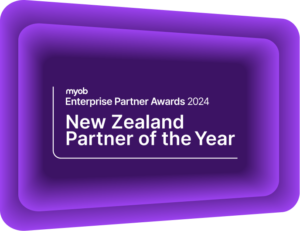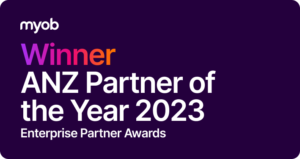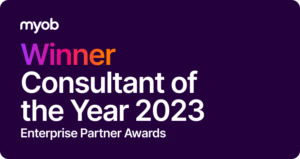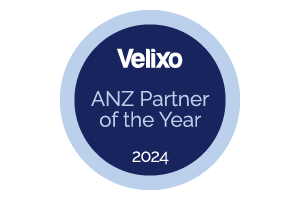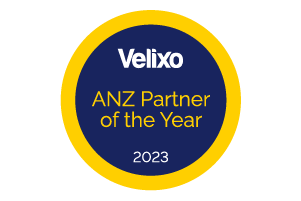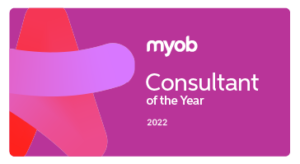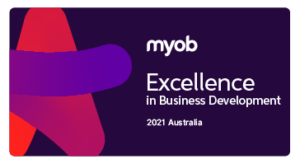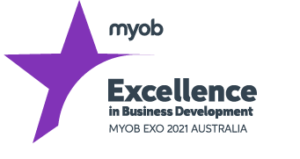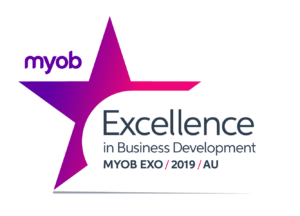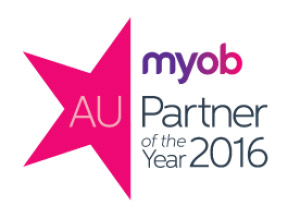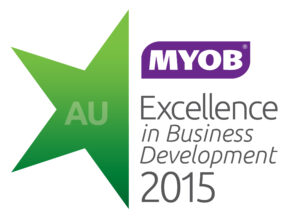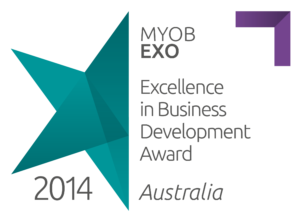Different types of ERP systems and how to choose the right one
Choose the right clever technology solution to improve your business efficiency.Clever software solutions are the key to improving efficiency in the digital age. Business management technology is accessible, affordable, and provides a justifiable return on investment. There are many types of ERP software systems to understand and choose from.

Moving to the Cloud eBook
Download nowWhat is an Enterprise Resource Planning (ERP) System?
Enterprise Resource Planning (ERP) systems are the next step to take after accounting systems in your technology journey. Also humorously known as Excel Replacement Systems, they excel in consolidating your data from multiple sources into one single source of truth. Above and beyond an “off-the-shelf” accounting system, ERP systems collect both financial and non-financial data.
When you have all your business data in one place, you can:
- Use it to build more accurate and customised reports without chasing data from disconnected teams and databases,
- Share insights and information with different teams in real-time so everyone is up to date with the right data,
- Automate functions across your entire organisation, with updates flowing between departments,
- Gain complete control and visibility of all processes and workflows across your organisation.
- Avoid or repair disconnection between departments in your organisation.
Are all ERP systems the same?
When it comes to the different types of ERP systems, the devil is in the details. All ERP systems are based on the accounting building blocks of Debtors, Creditors, Stock and General Ledgers. As such, they can manage finances, inventory, projects, supply chain, sales and customers, and inventory. However, it is up to the intricacies of each system and the configuration as to how the different modules work together and their strengths and weaknesses. The combination of software and implementation determines if a particular system will be a good fit for your organisation.
This is why you need a trusted guide for your ERP implementation journey. An ERP expert can guide you through the ERP selection process, understanding the nuances between systems and what your organisation needs before recommending and implementing the best type of ERP for improved efficiency.
On-premise ERP systems
ERP systems can be deployed and managed in a variety of different environments. On-premise ERP systems live on servers at your physical premises. They are effectively hard wired into your local network.
Advantages
On-premise ERP systems are:
- Completely within your control – you are in charge of software updates, security, integrations, and more.
- Customisable and configurable to your requirements, as you have complete oversight of the software
- Generally, it provides much faster response times than Cloud-based or even hosted services.
Disadvantages
Disadvantages of on-premise ERP systems:
- They require on-premise servers, which can mean significant capital expenditure at the very beginning of your system lifecycle. Such servers usually last about 5 years before they need to be replaced, adding future costs,
- Requires dedicated maintenance, not just in the case of server software and hardware requirements, but your team must manage anti-virus, backups and disaster recovery protocols,
- Require workarounds for data access out of the office such as VPNs or Remote Desktop access. Remote and out-of-office work has become a necessity since the COVID-19 pandemic and has been a significant driver of cloud ERP adoption.
Use cases
On-premise ERP systems are well suited for organisations that need total control with customisations and integrations. Large organisations with existing IT resources dedicated to ongoing support, maintenance, and backups can also work with on-premise ERP systems. For organisations already operating with the on-premise servers required to run these systems, the incremental cost for implementation and onboarding will be greatly reduced.
Cloud-based ERP systems
Cloud-based ERP systems do not require any on-premise hardware or servers. Your data is stored in the cloud and access is through your internet connection via a dedicated application or web-browser.
Advantages
Cloud ERP systems are:
- Accessible from any location and at any time. Simply sign onto the system with a working internet connection and work with your data in real time.
- Secure and encrypted from the hosting provider to the user. Hosting providers stake their reputation on security, disaster recovery, and backups – they handle the entire process so you can divert dedicated system resources elsewhere in the organisation,
- Not reliant on any on-premise infrastructure or hardware, leading to significant cost savings for server hardware and maintenance,
- Regularly updated to automatically add new functionality and maintain security, you can always take advantage of the latest features without making manual updates,
- Scalable to quickly and easily match your changing requirements. Add more user access licences, modules, or additional integrations giving you flexibility to manage changing operations.
- A platform for natural collaboration and communication for your team, everyone is working on a single unified platform with real-time data.
- Typically billed as a monthly subscription cost

Benefits of the Cloud Brochure
Download nowDisadvantages
Disadvantages of cloud ERP systems:
- Dependency on internet connectivity and other protocols. Sometimes, the ability to connect is out of your and the vendor’s hands if there is a regional/global outage. Internet disruptions or slow speeds can slow productivity.
- Dependency on the vendor and hosting provider for updates, maintenance, uptime, and backups. Hosting providers have backup centres in case of any compromise or downtime from their hardware, which mitigates this risk.
- There may be some integration limitations depending on the system. Integrating with legacy or on-premise systems can be especially challenging.
- Because you have less direct control over the software and database, there may be less flexibility for customisation compared to an on-premise system.
Use cases
Cloud-based ERP systems are well suited for organisations spread across multiple locations, time zones, or remote workforces that all benefit from working with the same data at the same time. Growing organisations can take advantage of the scalable nature of cloud ERPs by quickly adding licences and without the need for additional on-premise hardware requirements. A migration to the cloud could be prudent for organisations with an on-premise system where the server is due for replacement – a cloud system can avoid the high capital outlay of these on-premise servers.
Hybrid ERP systems
Hybrid cloud solutions involve the integration of on-premise data sources with cloud environments, creating a seamlessly connected infrastructure. This integration takes a balanced approach between the benefits of on-premise control with the flexibility and scalability provided by cloud services. It can be an on-premise system, hosted in the cloud or an on-premise system integrated with cloud-based applications.
Advantages
Hybrid ERP systems are:
- Part of a gradual transition to the cloud. Organisations making good use of their existing on-premise system that is still fit for purpose can host their data in the cloud. This continues their use of the established system, with the flexibility of anytime, anywhere access.
- Cost-effective, because you can continue using your existing on-premise system but avoid the large capital expense of on-premise servers.
- Adaptable to your organisation’s requirements. Integration with third-party cloud applications extends the scope of your business management platform.
- Managed by a hosting provider, removing the burden on your team to manage backups and disaster recovery.
Disadvantages
Disadvantages of hybrid ERP systems:
- Hybrid cloud systems are relatively complex to manage – you need an experienced and trusted software partner to guide you along the journey and offer support if and when you need it.
- Dependency on the hosting provider or vendor for data management and migration, as well as maintenance and uptime. However, reputable hosting providers can manage these risks and guide you through the process.
- Require dedicated integration between third-party systems and your core ERP. These integrations may bring additional costs.
Use cases
A hybrid ERP platform is ideal for cloud-driven, future-focused organisations using an on-premise system that is still a good fit for their organisation. Especially when it comes time to replace your on-premise servers, for companies that are testing the waters with the cloud, a hybrid ERP can become part of a phased approach, gradually changing and modifying your systems for improved efficiency.
Multi-Cloud ERP Environments
A multi-cloud approach involves hosting and storing multiple elements of your ERP and business management system with different hosting providers.
Advantages
Multi-cloud ERP systems are:
- Not locked into a single cloud hosting vendor, providing improved flexibility for your cloud future.
- Scalable on a wider level, as you can leverage multiple providers for an increase in storage space or accessibility.
- Not dependent on a single hosting provider for maintenance, security, uptime and other requirements. If one provider faces interruption, other parts of the system can be operated without issue.
Disadvantages
Disadvantages of multi-cloud ERP systems:
- These systems are incredibly complex, with diminishing returns in terms of latency and security. It requires advanced IT expertise and integration strategy to optimise and maintain this platform.
- The cost to run these systems increases with the wider reliance on different hosting providers, including higher operational costs to manage the different platforms and stay on top of any redundancies.
- Increased security risks to manage data across multiple sources, databases, encryption protocols, and more.
- Instead of being locked in to one hosting provider, you could become locked in to multiple. Without careful consideration and strategy, you could be building a house of cards in the cloud – with one piece being removed everything could fall apart.
Use cases
Multi-cloud ERP systems are best leveraged by organisations that desire extreme flexibility and system up time. These organisations must be able to handle the additional costs as well as carefully plan their integration and system strategies to take advantage of this flexibility.
What are the leading ERP systems on the market?
There are a wide range of ERP systems – cloud, on-premise, hybrid and multi-cloud, that are available to organisations in Australia and New Zealand.
Acumatica and MYOB Acumatica
Acumatica is a cloud-based ERP solution designed for mid-market businesses. It offers a broad range of modules, including financials, project management, payroll, workforce management, and CRM.
MYOB Acumatica has the same functionality as the Acumatica system but localised for Australian and New Zealand market by MYOB.
MYOB Exo Business
MYOB Exo is an on-premise ERP solution specifically designed for small to mid-sized businesses in Australia and New Zealand. It offers comprehensive business management tools, including financials, payroll, Job Costing, customer relationship management (CRM), and inventory management.
MYOB Exo Business is incredibly successful in combination with ExoHosted – a hybrid cloud hosting solution developed to move MYOB Exo into the cloud.
Microsoft Dynamics 365
Microsoft Dynamics 365 combines ERP and CRM capabilities in a unified cloud-based platform. It is popular among mid-sized to large organisations.
ORACLE Netsuite
NetSuite is a cloud-based ERP solution primarily aimed at small to mid-sized businesses but also used by larger enterprises.
Industry-specific implementation of ERP systems
Flexible and customisable ERP systems can be deployed to meet the different needs of specific industries. ERP systems that can adapt to different industry requirements are usually modular – with different configurations and builds of modules to meet industry requirements. For example, a Professional Services organisation might have limited need for an inventory management module, but strong need for project accounting whereas a Wholesale, Import, Distribution organisation might be the reverse.
MYOB Acumatica is built to meet the needs of a wide range of industries across Australia and New Zealand:
- Construction,
- Wholesale and distribution,
- Not-for-profit,
- Healthcare,
- Government,
- Financial services,
- Multi-entity organisations,
- Field services,
- Professional services,
- Engineering firms,
- Insurance providers,
- Project management and accounting organisations,
- Retail,
- Manufacturing, and more.
Factors to consider when choosing an ERP system
There are many factors to consider when choosing an ERP system and managing risks The best approach is to define your requirements and then explore solutions that meet your criteria. A trusted software expert can evaluate your requirements and suggest the best course of action for your software ERP journey. These are the important factors to consider:
- The software – does it have the functionality and customisability you need at a price point that meets your budget?
- The implementer – a selection that is just as important as the software; does the implementer have the skills required to customise the system to fit your organisation?
- Ongoing support and business process improvement – how will your organisation improve efficiency independent of the ERP system? Simply purchasing an ERP system alone will not improve efficiency.

Making your way through the ERP Selection process eBook
Download nowFrequently Asked Questions about ERP systems
There are lots of Frequently Asked Questions about ERP systems. These range from costs, expectations, ongoing support, and more.
What is the difference between ERP and CRM software?
What is the typical timeline for ERP implementation?
How can businesses determine if they need to upgrade their current ERP system?
What are the cost factors involved in selecting an ERP system?
Take the next steps
Kilimanjaro Consulting is the leading implementation partner for MYOB Acumatica across Australia and New Zealand. Our team has the software skill and accounting knowledge to configure the MYOB Acumatica system to meet your complex requirements. We are MYOB Acumatica specialists, dedicated to understanding the world’s fastest growing ERP system and the benefits it brings to larger, more complex organisations across Australia and New Zealand.
To start a conversation about how clever ERP software solutions can improve efficiency in your education institution, email sales@kilimanjaro-consulting.com or call 1300 857 464 (AU) or 0800 436 774 (NZ).


